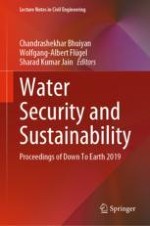2021 | OriginalPaper | Buchkapitel
Spatial Disparity in Access to Improved Source of Drinking Water and Sanitation Facility: A District-Level Assessment in India
verfasst von : Amitha Puranik, Nilima, Sushmitha Prabhu
Erschienen in: Water Security and Sustainability
Verlag: Springer Singapore
Aktivieren Sie unsere intelligente Suche, um passende Fachinhalte oder Patente zu finden.
Wählen Sie Textabschnitte aus um mit Künstlicher Intelligenz passenden Patente zu finden. powered by
Markieren Sie Textabschnitte, um KI-gestützt weitere passende Inhalte zu finden. powered by
